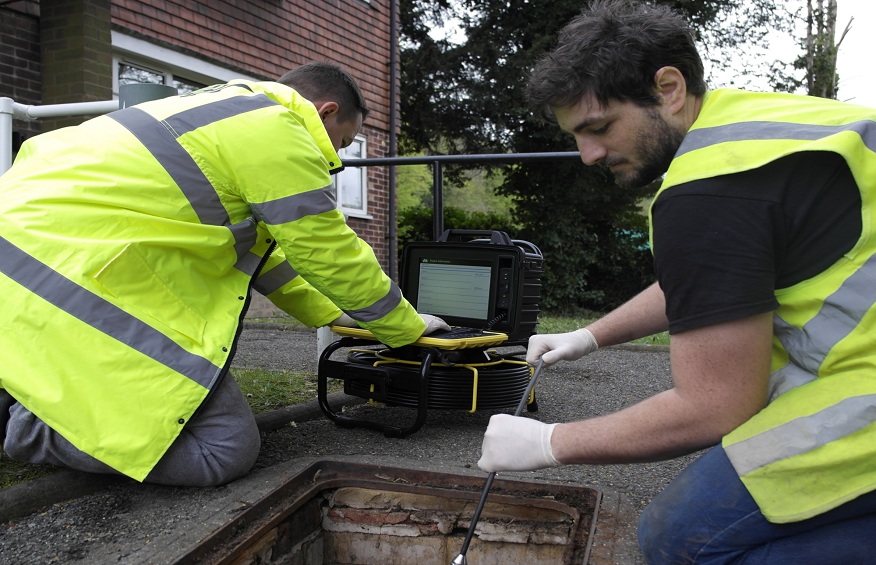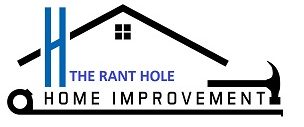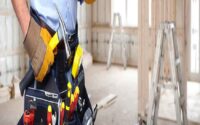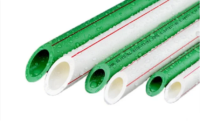Peering Below: Unmasking Drain Problems through London’s CCTV Surveys
Unveiling the Hidden World Beneath
London, a city steeped in history, boasts an intricate network of infrastructure that lies hidden beneath its bustling streets. Among these concealed systems, drains play a crucial role in maintaining the city’s hygiene and functionality. However, just like any other complex system, drains are susceptible to wear and tear, blockages, and structural issues that can disrupt the smooth flow of urban life.

In this two-part blog series, we delve into the fascinating world of drain systems in London and the invaluable role that Closed-Circuit Television (CCTV) surveys play in uncovering the hidden mysteries and potential problems lurking below the surface.
The Subterranean Lifelines
London’s drainage system, often referred to as “the unsung heroes of the city,” is an intricate maze of pipes, tunnels, and chambers that manage the flow of waste and rainwater away from residential, commercial, and industrial areas. This vast network is designed to prevent flooding, protect public health, and maintain the overall sanitation of the city.
From the Victorian-era brickwork that forms the foundation of many of London’s drains to modern concrete tunnels, the system’s diversity reflects the city’s rich history of urban development. Over the years, this underground labyrinth has undergone significant expansions and upgrades to accommodate the growing demands of the ever-evolving metropolis.
The Hidden Threats
While the drain system is crucial for the city’s functioning, it isn’t immune to challenges. Debris, oil, grease, leaves, and even invasive tree roots find their way into the drains, causing blockages that can lead to localized flooding and backups. Additionally, aging infrastructure and structural degradation can weaken the system, posing long-term risks to the city’s residents and environment.
Detecting these issues in such an intricate and hidden network used to be a daunting task. Traditional methods of inspection often required disruptive and time-consuming excavation, causing inconvenience to residents and businesses alike. Enter modern technology and the era of CCTV surveys London.
The CCTV Revolution
CCTV surveys have revolutionized the way we inspect and maintain underground infrastructure, and London has embraced this technology wholeheartedly. These surveys involve sending specialized cameras equipped with high-resolution lenses into the drain systems. These cameras capture real-time footage, allowing engineers and experts to remotely assess the condition of the drains without the need for excavation.
The benefits of CCTV surveys are manifold. They provide accurate visual information about the state of the drain system, highlighting any signs of blockages, cracks, collapses, or other potential issues. This data-driven approach enables authorities to take proactive measures, prioritizing maintenance efforts and avoiding costly emergency repairs. Moreover, it minimizes disruption to daily life by pinpointing specific areas that require attention.
Unveiling the Unseen
As we’ve seen, London’s drain system is a hidden lifeline, vital to the city’s well-being. In Part 2 of this series, we will dive deeper into the intricacies of CCTV surveys, exploring how these technological marvels work and the impact they have on London’s urban landscape. We will also discuss some real-life examples of how CCTV surveys have unearthed hidden problems and played a pivotal role in keeping London’s drains flowing smoothly.
Stay tuned for the next installment, where we continue our journey into the depths below and unveil the mysteries of CCTV surveys in action.
Peering Below: Unmasking Drain Problems through London’s CCTV Surveys
Illuminating the Depths – How CCTV Surveys Keep London Flowing
In Part 1 of our blog series, we delved into the concealed world of London’s drainage system and how it plays a vital role in maintaining the city’s functionality. We explored the challenges posed by debris, aging infrastructure, and the intricate nature of the system. Now, in Part 2, we’re going to shine a light on the remarkable technology behind CCTV surveys and showcase their indispensable contributions to London’s urban landscape.
The Eyes Underground: How CCTV Surveys Work
The success of CCTV surveys lies in their ability to provide a comprehensive view of the underground infrastructure without the need for invasive and disruptive excavation. This is made possible by the deployment of specialized cameras that navigate through the labyrinthine tunnels of London’s drains.
Equipped with high-resolution lenses and advanced illumination systems, these cameras capture real-time footage that is transmitted to engineers and experts above ground. This footage offers an intimate look into the condition of the drains, revealing intricate details that might otherwise go unnoticed. The ability to remotely explore the hidden depths of the drainage system is a game-changer, allowing for timely assessments and informed decision-making.
Uncovering Hidden Problems
CCTV surveys are not just about capturing fascinating visuals of the underground world. Their true value lies in their ability to uncover hidden problems that can disrupt the smooth flow of the city.
Here are some ways in which CCTV surveys have proven to be invaluable:
Early Detection of Blockages:
Debris, grease, and other materials often find their way into drains, leading to blockages. CCTV surveys can identify these blockages and their locations, enabling swift removal before they escalate into larger issues.
Assessing Structural Integrity:
The wear and tear on drain infrastructure can lead to cracks, collapses, and other structural issues. CCTV surveys help engineers assess the condition of pipes and tunnels, enabling timely repairs and replacements.
Prioritizing Maintenance:
With a clear visual representation of the drain system’s condition, authorities can prioritize maintenance efforts and allocate resources where they are most needed. This proactive approach prevents emergencies and minimizes disruptions.
Monitoring Environmental Impact:
CCTV surveys can also monitor the impact of the drain system on the environment, such as identifying leaks that might be contaminating water bodies or underground aquifers.
A Case in Point: The Thames Tideway Project
One remarkable example of the transformative power of CCTV surveys is the Thames Tideway project. This massive infrastructure initiative aims to upgrade London’s aging sewage system, enhancing its capacity to meet the needs of the growing city. The project involves the construction of a new tunnel to prevent untreated sewage from entering the River Thames during heavy rainfall.
CCTV surveys played a pivotal role in planning and executing this project. Engineers used these surveys to analyse the existing drain network, identify problem areas, and design an efficient and sustainable solution. The insights gained from CCTV footage helped optimize the project’s design, reduce potential environmental impact, and ensure that the new infrastructure is both effective and resilient.
Peering Forward: A Bright Future for London’s Drains
As we conclude our two-part series on London’s CCTV surveys and their role in unmasking drain problems, it’s clear that these technological marvels have transformed the way we manage urban infrastructure. With their ability to provide detailed, real-time insights into the hidden depths below, CCTV surveys are helping London anticipate challenges and preserve the city’s vitality.
From Victorian-era brickwork to cutting-edge camera technology, the journey into London’s drains is a testament to the city’s ability to adapt and innovate. As London continues to grow and evolve, one thing remains certain: the hidden world below will be illuminated by the watchful eyes of CCTV surveys, ensuring that the city’s lifelines remain free-flowing and functional for generations to come.



